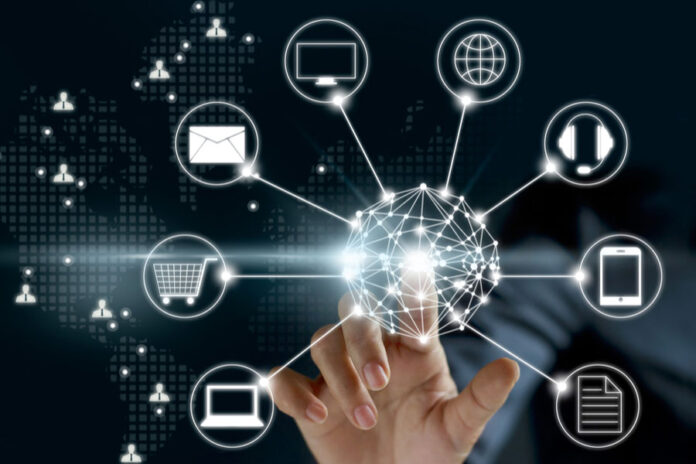Según la publicación del portal ReadWrite
In today’s all conducive and comprehensive world, brands and entrepreneurs are brainstorming and strategizing the optimum way to market their products. We live in an era where everything is available in an instant. The availability of information in a split second and access to multiple alternatives to the same commodity has fostered fierce competition.
Achieving the sales target at the year’s end has become a daunting task for many sales managers. The goal of marketers is to engage and attain customers who become loyal consumers of their brand. Customers are truly the king of the barter exchange.
Organizations must understand their needs and take corrective measures to improve customer relationships. To engage with customers more interactively, marketers have adopted the omnichannel marketing strategy.
What is omnichannel marketing?
Omnichannel marketing makes your brand interact with the customers on seamless platforms they use. This type of marketing involves the use of numerous marketing channels to improve the quality of services provided to customers. Customer behavior dictates the strategies implemented in omnichannel marketing.
The crux of omnichannel marketing is that customers tend to use more than one channel while they make their purchases. The omnichannel approach involves active participation and interaction with the customers across these channels.
An omnichannel campaign ensures that customers can purchase online or offline, regardless of their preferred channel. In simpler words, omnichannel marketing allows the business to interact, engage, persuade and attain a customer in the longer run.
The extended marketing omnichannel offers is where they are not just fans of your brand but loyal repeat customers. Omnichannel marketing is a complex version of multichannel marketing lets understand how and their differences
Multichannel marketing and Omni channel marketing key differences
Multichannel marketing is promoting the product via multiple channels like social media, retail outlets, or a blend of these channels to convert the desire to potential leads. The key point here is the choice of the company as to which channel it wishes to choose.
Multichannel marketing is based on the approach that customers have more than one choice to take the informed decision to purchase the product. It involves direct and indirect marketing, online channels such as Instagram, Facebook, Twitter, LinkedIn, emails, video ads, etc. Offline channels include retailers, banner ads, print media, etc.
The fundamental distinction between omnichannel and multichannel marketing is that with multichannel marketing, the same message is disseminated over all media and channels. In omnichannel marketing, the message is adapted and personalized for each channel in accordance with the relevant circumstances. An example of omnichannel marketing would be-
You have started yoga classes, and a few people who live in your locality have interacted with the post on social media, saying that they loved the trial sessions. Now you also send them the catalogs of the timings of the classes, the types of exercises to be covered, etc.
Analyzing their needs, you also messaged them on WhatsApp your e-catalog and the prices per session. You also sent out a google form for collecting feedback and analyzing the response from the clients. In this way, you carry out Omni channel marketing.
How you can create your omnichannel campaign?
Omnichannel marketing encompasses complex processes wherein you use different channels to market your product and where you meet people in different journeys, locations, and other varied factors. The messages are then tailor-made and specially customized for specific channels.
Here are the steps you need to follow
1) Identify your customer touchpoints– Omnichannel marketing essentially depends on the customer’s intent and approach toward the purchase decision of the product. Omnichannel drives the end user towards the business and impacts their buying behavior.
The firm should pay attention to the sources of information about the customer that help them in understanding the needs, cognitive biases towards a particular marketing approach or channel, behavioral mannerisms, and feedback of past customers. The business can examine the data and develop the next steps
If you use first-party data, such as CRM software, is the best. If you use an analytical tool for your website, you can analyze the number of clicks on your page and the engagement of the audience with your content.
2) Analyse the data and determine 3-4 channels where there is maximum engagement
After you have analyzed the data using the CRM and the analytical tool, find out which is the most used channel for confirming the purchase of the product. Map your marketing strategy accordingly.
3) Engage with your customers daily and ask for their feedback
We live in a constantly evolving world; it is important for marketers to regularly connect with customers. It may also happen that the firm might have missed the point in its strategy, or the clients might not be happy with the work.
Client feedback helps you understand what needs to be done.
Conclusion
Additionally, omnichannel marketing lessens cross-channel repetition. The omnichannel ecosystem keeps track of customer behavior throughout the customer journey and across channels. Customers do not have to repeat procedures or read redundant information when switching channels if they start in one channel.
All the channels offer a coordinated, smooth experience and are equally informed of client behavior. Organizations can better understand their consumers’ behavior and preferences because of this information sharing.









